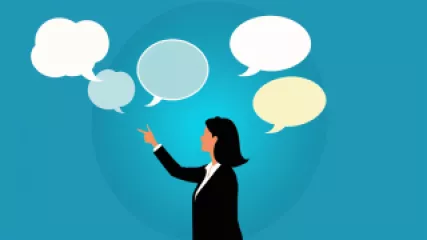10 Persuasive Language Patterns that Influence Decision-Making
10 Persuasive Language Patterns that Influence Decision-Making
In the realm of psychology, the art of persuasion has long been a subject of fascination and study. How do we influence the decisions and behaviors of others? What linguistic techniques can we employ to sway opinions and drive action? In this comprehensive list, we'll explore 10 powerful persuasive language patterns that can have a significant impact on decision-making.
1. The Power of Reciprocity
The principle of reciprocity is a deeply ingrained social norm that compels us to repay favors and return kindness. Skillful communicators leverage this psychological tendency by offering small gifts, gestures, or concessions upfront. This creates a sense of obligation in the receiver, who then feels compelled to return the favor, often in a more significant way. By establishing a give-and-take dynamic, persuaders can cultivate positive rapport and increase the likelihood of their requests being granted.
2. Scarcity and Exclusivity
Humans have a natural tendency to place a higher value on things that are scarce or exclusive. Persuasive language can tap into this cognitive bias by emphasizing the limited availability or unique nature of an offer or opportunity. Phrases like "limited-time only," "while supplies last," or "exclusive access" can create a sense of urgency and desirability, prompting the audience to act before the opportunity slips away.
3. Social Proof and Conformity
We are heavily influenced by the actions and opinions of others, particularly those we deem to be similar to us or part of our social in-group. Persuaders can leverage this tendency by highlighting the widespread adoption or endorsement of their ideas or products. Testimonials, reviews, and references to the popularity or success of a particular course of action can make the audience feel more inclined to follow suit, as they seek to align with the perceived norms and preferences of their peers.
4. Storytelling and Emotional Appeal
Humans are innately drawn to stories, as they have the power to evoke emotions and create personal connections. Persuasive communicators understand the importance of weaving narratives that tap into the audience's feelings and values. By crafting compelling stories that illustrate the benefits or consequences of certain choices, persuaders can create a more impactful and memorable appeal, moving the audience to action on a deeper, emotional level.
5. Framing and Perspective
The way information is framed can significantly influence how it is perceived and evaluated. Persuaders often employ strategic framing techniques, such as emphasizing potential gains over losses or presenting options in a positive or negative light. By manipulating the frame of reference, communicators can guide the audience's decision-making process and nudge them towards the desired outcome.
6. The Power of Repetition
Repetition is a powerful tool in the persuader's arsenal. By consistently reinforcing key messages, ideas, or slogans, communicators can increase the likelihood of those elements being remembered and accepted. Repetition can also serve to build familiarity and trust, as the audience becomes more comfortable and confident with the repeated information.
7. Appealing to Authority and Expertise
Humans tend to place a high degree of trust in individuals or institutions perceived as authoritative or expert in their respective fields. Persuaders can leverage this tendency by citing credible sources, referencing academic studies, or highlighting the qualifications and credentials of those presenting the information. By establishing a sense of authority and expertise, communicators can lend greater credibility to their arguments and increase the persuasive impact of their message.
8. Rhetorical Questions and Assumptive Language
Skillful persuaders often employ rhetorical questions and assumptive language to subtly guide the audience's thought process. By posing questions that imply a certain answer or making statements that assume a particular outcome, communicators can steer the audience towards the desired conclusion without explicitly stating it. This technique can be particularly effective in overcoming resistance or creating a sense of inevitability around a particular course of action.
9. The Power of Specificity
Providing specific, concrete details can lend greater credibility and persuasive power to a message. Persuaders may use precise figures, statistics, or tangible examples to support their claims and make their arguments more compelling. This level of specificity can help overcome skepticism and strengthen the audience's trust in the presented information.
10. Anchoring and Contrast
The principle of anchoring suggests that people's decisions are heavily influenced by the first piece of information they receive on a particular topic. Persuaders can leverage this tendency by strategically introducing an initial point of reference, or "anchor," that then serves as a benchmark for evaluating subsequent information. By presenting options or alternatives in a way that highlights the contrast with the established anchor, communicators can guide the audience's perception and decision-making.
These 10 persuasive language patterns represent a powerful toolkit for those seeking to influence the decision-making processes of others. From leveraging the power of reciprocity and scarcity to crafting compelling narratives and framing information strategically, skilled communicators can tap into deep-seated psychological tendencies to sway opinions and drive action.
It's important to note, however, that the ethical application of these techniques is paramount. While they can be powerful tools for positive change and productive collaboration, they can also be misused for manipulation or personal gain. As with any form of influence, it is essential to maintain a sense of integrity and consider the broader implications of one's persuasive efforts.
By understanding the psychology behind these language patterns and wielding them responsibly, communicators can enhance their ability to inspire, motivate, and guide their audiences towards mutually beneficial outcomes. Ultimately, the art of persuasive language is a valuable skill that, when applied ethically, can contribute to more effective decision-making and greater collective progress.






